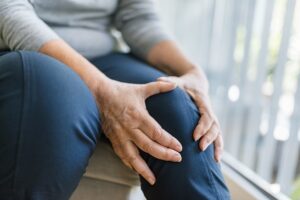
Knee osteoarthritis (OA) is a condition that causes pain and stiffness in the knee joint. While doctors know that physical activity can help ease these symptoms, only about one out of every ten people with knee OA actually exercises regularly.
Advertisement
Researchers at the University of South Australia conducted a unique study to understand why people with knee osteoarthritis aren’t more active. They discovered that many people with this condition unconsciously believe that exercise might be harmful, even though medical advice clearly states that physical activity is beneficial.
The study found that 69% of people with knee pain had stronger unconscious beliefs that exercise was dangerous compared to people who did not have knee pain. This means that even if someone says they think exercise is safe, deep down, they might actually be afraid that it could hurt them.
Brian Pulling, a PhD candidate at the University of South Australia and a lead researcher on the study, explained that their findings offer valuable insights for doctors and other health professionals who treat people with knee OA. Pulling mentioned that although research shows exercise is beneficial for people with knee OA, most of these individuals do not engage in enough physical activity to improve their joint or overall health.
Pulling noted that previous research often used questionnaires to understand why people with OA avoid exercise. However, these surveys may not capture people’s true feelings. The research team wanted to dig deeper to find out why so many people are still avoiding exercise despite knowing its benefits.
To investigate, the researchers created a tool that measures people’s unconscious beliefs about exercise. This tool can reveal whether individuals believe, without even realizing it, that physical activity is risky for their condition. Pulling explained that their study showed even those who said they weren’t afraid of exercise still had hidden fears that movement could be harmful.
The research highlighted that people’s beliefs about exercise can be complicated. Sometimes, what they say doesn’t match their deeper, unconscious thoughts. This discrepancy means that just asking people directly may not always give an accurate picture of their true feelings about physical activity. The new tool helps uncover these hidden fears and can predict people’s behavior better than just asking them questions.
The tool, called an implicit association test, is used online and presents a series of words and pictures. Participants must quickly decide if they associate each with being safe or dangerous. This quick response helps capture their true feelings without them overthinking or answering in a way they think they should.
Advertisement
Associate Professor Tasha Stanton mentioned that the new tool can help identify people who may have trouble increasing their activity levels. Stanton emphasized that what people say they will do and what they actually do can be very different.
With more accurate information from this tool, health professionals can better support patients in becoming more active. It could also lead to new opportunities for treatments like pain education and therapies designed to help people become more comfortable with exercise, even if they initially say they aren’t afraid to move.
In conclusion, this study provides a new perspective on why people with knee OA might avoid exercise. It highlights the importance of understanding what people say and what they unconsciously believe about their condition and activity levels.
